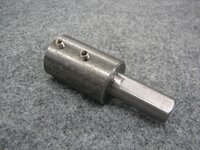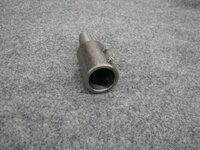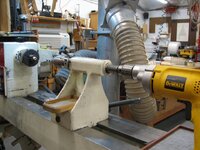I'm thinking, would an electric screw driver work? Slower rpm and not much torque required. Quicker to reverse with the rocker switch.
Actually, I think that some considerable torque is indeed sometimes required.
What's more, control of the torque is also often required. . In my drilling, I don't just ram the drill through the blank. . I frequently go by the feel ... especially when I am starting the hole. . In some materials, in order to get a hole accurately aligned with the blank axis you have to start very gently and slowly. . The same is true if the end of the blank into which you are forcing the drill bit is not accurately squared with the blank axis.
I have been thinking about this whole on-lathe drilling process overnight (ie. slept on it !!) and have concluded that I prefer to not have a power drive for the drill bit in most cases for the above reasons.
I would only use the power drive under special circumstances ... on MY lathe.
For me, it is important to "get the feel" of the drilling process ... and especially at the start of the hole ... but sometimes throughout the drilling operation.
I think there can be a few "gotchas" and I prefer to do the drilling with my hand on the tailstock wheel.
For retracting the drill, I would definitely say the power would be a big plus .... but I don't think you can have it both ways.
These are just my thoughts ... for MY lathe ... for the work I most commonly do.
So, for me, at this time, no motorization ... but thanks anyway, Rick. . I could revisit my decision.










